I believe it was Charles-Francois Gounod who, while at the Conservatoire de Paris, famously coined that immortal phrase,
"Leeeet's get readyyyy to ruuuuumblllllle."
And, indeed, so we shall.
Booooooo
In the red corner: the 2005 Douji "Yisheng" red-label (leftmost above). A spritely contender, allegedly less violent than its heavyweight counterpart, the 2005 Douji "Yisheng" purple-label (rightmost above), but still energetic and spoiling for a fight.
Available from Taobao for around 350 RMB ($54), previously available at Yunnan Sourcing for a decent $59.
Hisssssss
In the other red corner, the defending middleweight champion of the world, the 2005 Laojie Yishenghao "Yisheng".
Available from Taobao for around 800 RMB ($121), typical Maliandao price around 750 RMB ($114), bought by me from Xiaomei's apparently charitable little brother for the 2006 price of [redacted].
(One of the conditions of sale was that I wouldn't divulge the price paid.)
The 2005 Douji
The Douji cake is made from small, fragmented, densely-packed leaves, as shown above. Like its brother, the purple-label cake, it has a very gentle aroma.
The 2005 Laojie Yishenghao
The Laojie Yishenghao, by way of contrast, flexes its long, luxurious leaves and shows its contempt for the crowd by issuing a potent, sweet aroma of chunky pu'ercha. Its compression is loose, its appearance entirely "bespoke".
Round one goes to the Laojie Yishenghao.
More of the 2005 Laojie Yishenghao
The Douji opts for Zidu, [purple belly], my prime pu'ercha pot. The Laojie Yishenghao heads for Gertrude, my celadon gaiwan, giving the underdog the better vessel. Nothing if not sporting.
Left: Laojie Yishenghao, right: Douji Yisheng
You might not think so given the above photograph, but the two contenders look rather different in reality.
The Douji is clean, crisp, and heavily orange. Like its stablemate, the purple-label, it darkens noticeably as it sits in the air.
The Laojie Yishenghao is cloudier, and gradually approaches its meniscus, rather than having it as well-defined as the Douji. It has green-yellow tints in its orange, which reminds me more of "straw-like" pu'ercha.
Round two: Douji
Left: Laojie Yishenghao, right: Douji.
Perhaps not obvious, but the leftmost leaves are larger and more whole,
while the rightmost leaves are smaller and more fragmented (as with the purple-label Douji version)
Perhaps not obvious, but the leftmost leaves are larger and more whole,
while the rightmost leaves are smaller and more fragmented (as with the purple-label Douji version)
The Douji is very much like the purple-label version, minus the kuwei. It is camphor-like, decently heavy, and woody. Perhaps it is not quite as sharp as its purple-label brother, due to its lessened potency. It lasts well, and remains sweet and pleasant without cracking. Like the purple-label, it is not the thickest soup in the world, but it holds the attention nicely.
The Laojie Yisheng is a different kettle of fish altogether. It has a sweet straw-like vegetal character, and is significantly more complex. It has some camphor, perhaps not as much as the Douji twins, but successfully stretches out more in all directions: texture, body, aroma, chunkiness, endurance.
The Douji has put up a good fight, but the Laojie Yisheng wins on points. It wasn't a knock-out victory, but there was a clear winner nonetheless.
---
The "hand-made" quality of the Laojie Yisheng is markedly more than the very decent, but ultimately "factory-styled" Douji. While I don't know if I'd pay the current asking price for the Laojie Yisheng, it is certainly worth more than the Douji pair.
I have a couple of Douji cakes on their way from a Taobao merchant, and so look forward to further rematches. As it is, I won't be buying any more of the red-label, because I prefer the pungent, potent, entirely more active purple-label. Both are very pleasant, however.
(Taobao vendor pages have confirmed that the Laojie Yishenghao is "Douji's previous existence".)
(Taobao vendor pages have confirmed that the Laojie Yishenghao is "Douji's previous existence".)
Addendum
June, 2011
This cake came from 版纳古树茶 [Banna Gushucha, or "Xishuangbanna Ancient-Tree Tea"], a Taobao merchant, for 330 RMB ($53), which, after shipping, comes out to cost the same as the $60 cost at Yunnan Sourcing. The latter sold out almost immediately after our discussion!
The leaves are surprisingly long and whole, and the cake is compressed neither heavily, nor loosely, but "just right", as shown below.
It is good tea - it has a tobacco-like sweetness that I thoroughly enjoy.
While less potent than the purple-label cake and the "Laojie Yisheng" equivalent, which I described above, it is charming in its own way. The sweetness develops as the leaves unfurl to reveal a character of old honey.
It's an excellent tea, and well worth buying if you have not yet tried it. While its contemporaries may trump it in terms of potency, it remains a good tea on its own terms, and is surely worth $53.

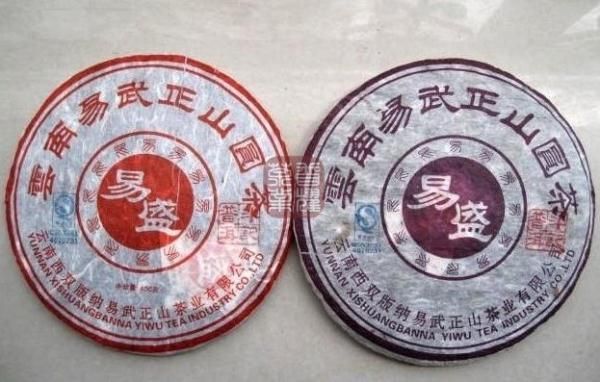
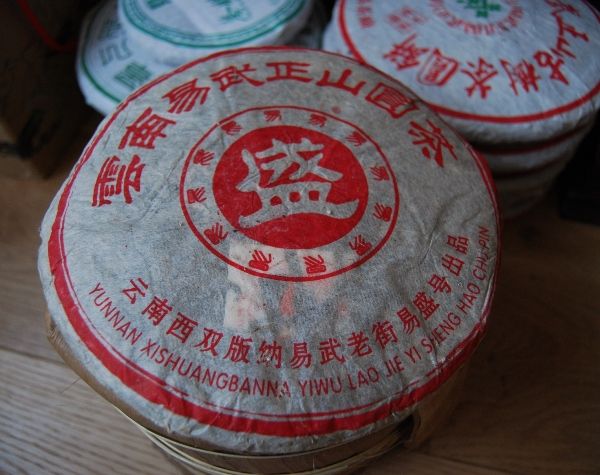
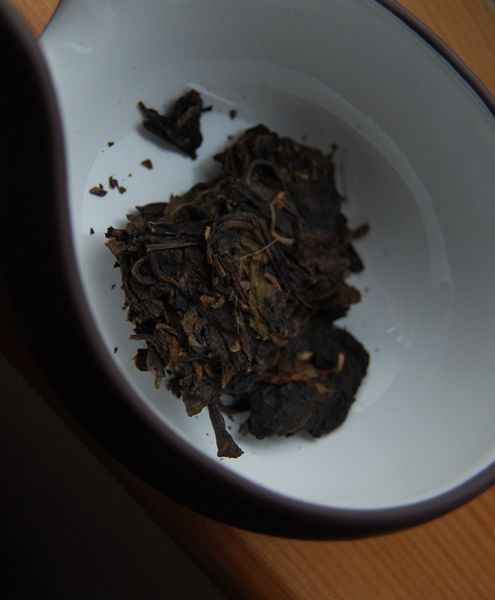
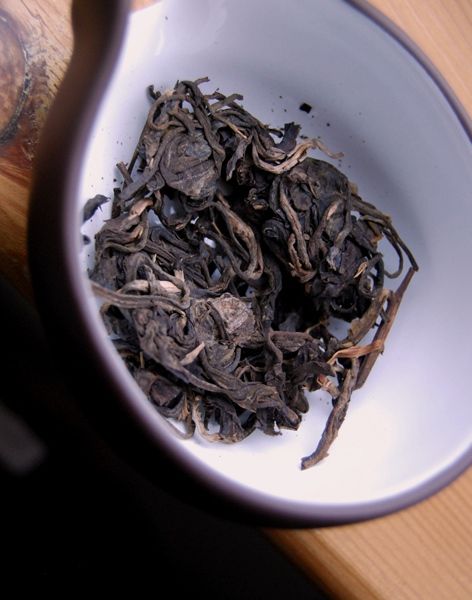
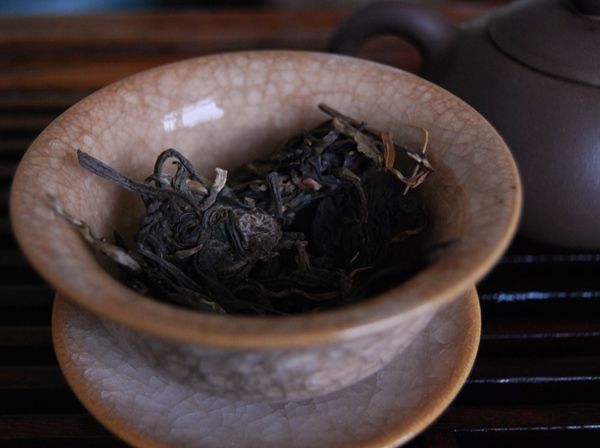

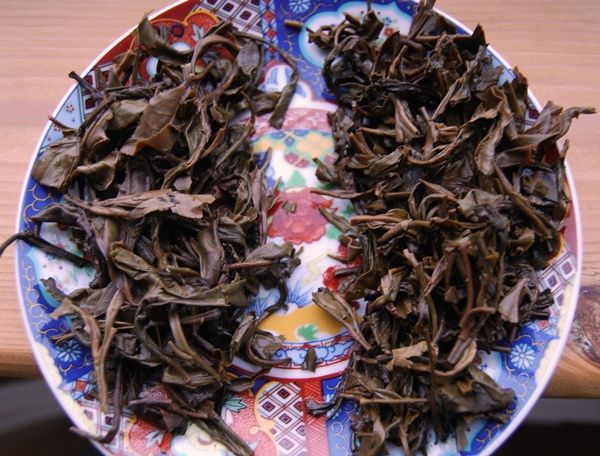
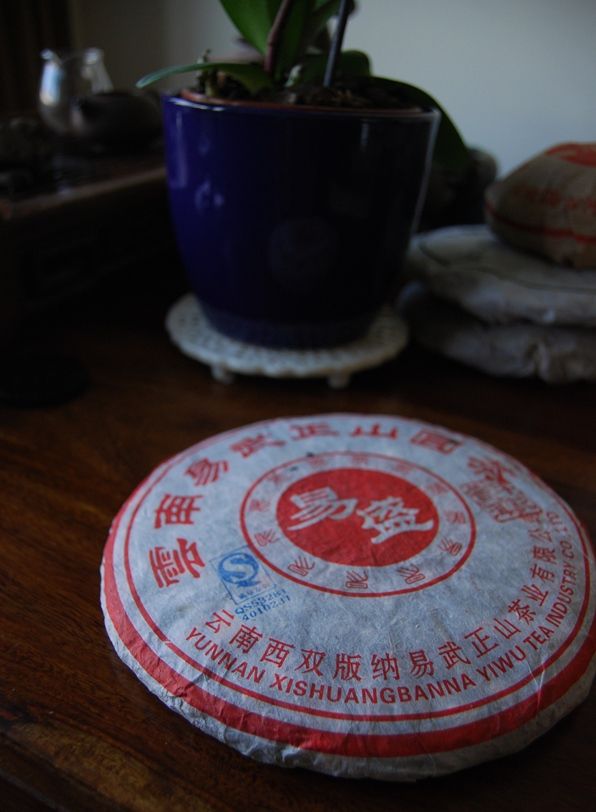

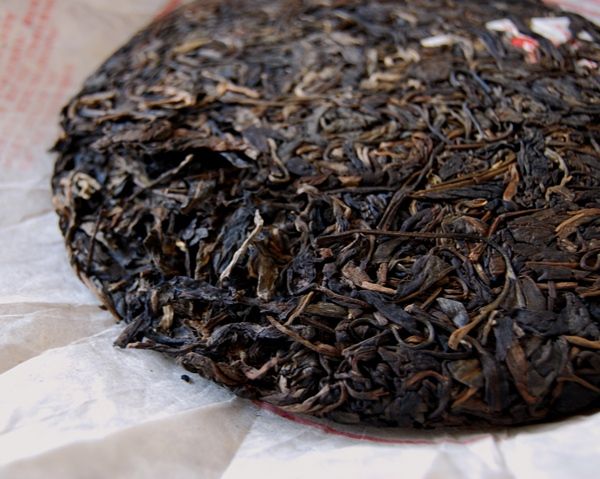
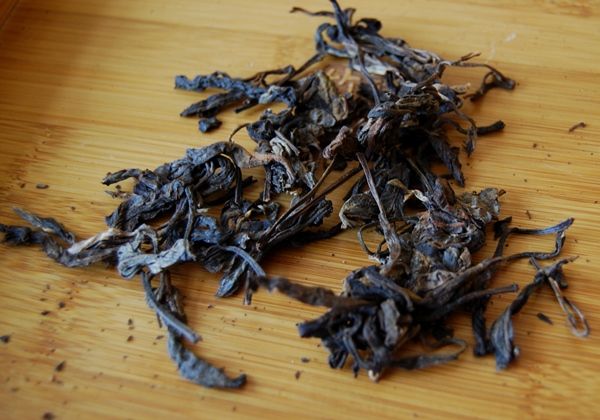
3 comments:
Just wanted to point out that the Hong Yi Sheng in the picture with Purple and Red together (from Taobao seller) isn't the same as the Autumn one I sold. It is the spring version a slight variation on the spring Purple Yi Sheng. You might also notice it is 400 grams, whereas the Autumn Hong Yi Sheng is 357 grams (no weight printed on that wrapper).
- Scott
Scott just stocked up on some of these spring red labels.For $62 if anyone is interested.
GN
...in which case I look forward to trying the spring red-label version, which I have just bought from YS. :)
Thanks again for the information.
Toodlepip,
Hobbes
Post a Comment